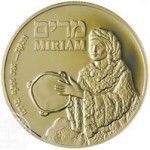A Cushite woman – B’ha’alot’cha
 Moses’ siblings complained because he had married a Cushite woman (Num. 12:1).
Moses’ siblings complained because he had married a Cushite woman (Num. 12:1).
One view says Cush is Upper Egypt; another that it is Ethiopia. The rabbis took the passage to refer to Zipporah even though she was a Midianite (Mo’ed Katan 16b).
Regardless, the problem seems to be that she was dark-skinned. God sternly rebukes Miriam and Aaron for criticising Moses, thus rejecting their apparent prejudice.
The Bible itself has no problem with Cushites, and the Psalms (68:32) speak of Egyptians and Cushites wanting to serve God. When people objected to Cushites, the prophet Amos emphasised that God was colour-blind: “Are you not as the children of the Ethiopians to Me, O Children of Israel?”
“Cushite” is not a code-word for unacceptable; the Talmud says that Cushites are handsome – despite their colour… and ethical – despite their appearance! Says the Tanchuma (Tzav 13), “If a boy is good-looking, his father calls him ‘Cushite’”.
Everywhere in modern Israel you see Jews of many backgrounds and skin colours. One might quote and adapt a famous rabbinic passage which arises out of the discussion of whether a court may impose the death sentence, “Who says your blood is redder than his (the criminal’s)?”
In the field of racial discrimination, one might say, “Who says that God loves palefaces more than people with dark skins?”



